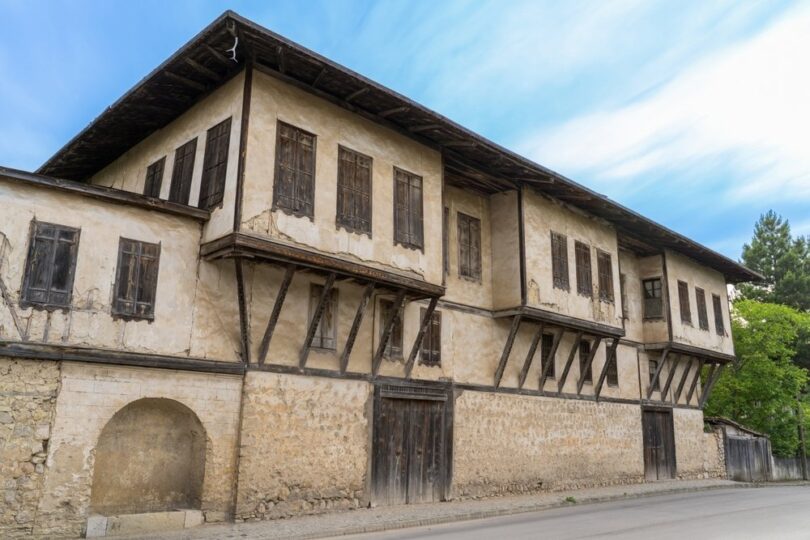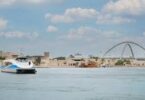Zeynep Köse
Explore Safranbolu, Türkiye’s picturesque town in the western Black Sea region, boasting a well-preserved historical heritage, charming wooden houses and a delectable culinary paradise
Safranbolu, a town located in the Karabük province of Türkiye, has become one of the prominent faces in global advertising. Situated in the western Black Sea region, this city welcomes visitors throughout all four seasons, boasting a unique historical texture, wooden houses, religious structures, natural beauty and rich cuisine.
In 1994, Safranbolu was rightfully recognized by UNESCO and included in the list of the best-preserved cities in the world, leaving a profound legacy for future generations.
Also, the mesmerizing houses of Safranbolu beautifully showcase Turkish culture, constructed with wood, adobe and brick, emphasizing the city’s rich cultural heritage.
With a history spanning hundreds of years, Safranbolu was once a thriving city along the Silk Road, hosting traders and becoming a significant commercial hub in Anatolia. The city’s essence is evident through its historical bazaar, caravanserais, mosques and other notable landmarks, reflecting Safranbolu’s identity and significance.
Here are some iconic landmarks explained for those who wish to visit Safranbolu.

Mosques
Kazdağlı Mosque: Constructed in 1779 by Kazdağlı Mehmet Ağa, the mosque features a square plan and a large dome, utilizing stone and brick in its architecture.
Köprülü Mosque: Built by Köprülü Mehmet Paşa, an important figure from the Köprülü era, the exact date of the mosque’s construction remains unknown, but it is estimated to have opened for worship around 1661. The mosque’s courtyard includes a fountain, a timekeeping room and an interesting sundial that dates back to the Ottoman era.
Izzet Mehmet Pasha Mosque: Constructed during the reign of Sultan Selim III, the mosque is a testament to the architectural prowess of its sponsor, Izzet Mehmet Pasha, who served as a grand vizier.
Bathhouses
One of the most famous bathhouses is Cinci Bathhouse. Dating back to the 17th century, Cinci Bathhouse is the oldest historical structure in the city. It was built in 1645 by Karabaşzade Hüseyin Efendi, also known as “Cinci Hoca.” The hammam, along with Cinci Inn, forms a valuable part of Safranbolu’s architectural heritage.
Landmarks
Old Government House: Constructed during the reign of Sultan Abdulhamid II, the building was later restored and transformed into the City History Museum in 2007.
Arasta Bazaar: Comprising 48 wooden shops where Yemeni shoes were historically produced and even sent to soldiers during the Turkish War of Independence.
Clock Tower: A precious landmark gifted to the city by Grand Vizier Izzet Mehmet Pasha.
Yörük Village: Preserving the rich cultural heritage of the Yörük community, this historical village is a valuable Turkish heritage.
Tokatlı Canyon: A breathtaking 9-kilometer (5.5-mile) walking trail stretching from Tokatlı Village to Safranbolu’s historical bazaar. It houses Türkiye’s first crystal observation terrace and offers stunning panoramic views.
Incekaya Aqueduct: Built by Grand Vizier Izzet Mehmet Pasha to supply water to the city, this 116-meter-long aqueduct stands tall above the Tokatlı stream, still impressive with its six arches.
Bulak Mencilis Cave: Among Safranbolu’s natural beauties, this cave is recognized as Türkiye’s fifth-longest cave.

Museums
Tabakhane Museum: Türkiye’s first and only tannery museum, preserving the city’s centuries-old leather production history.
Chocolate Museum: Established in 2019 by chocolate master Mesut Kırımlı, showcasing Safranbolu’s historical and natural beauty with exhibits made from approximately 5.5 tons of chocolate.
Governor’s Mansion: A museum reflecting traditional Turkish life and customs within old Turkish houses, admired for its unique rotating system.
Culinary paradise
Aside from its historical and natural treasures, Safranbolu is renowned for its mouth-watering meat and meat-based dishes.
Some of the local delicacies include “kuyu kebabı” (meat served with mud from the well along with tomatoes, peppers, and rice), peruhi, Greek dumplings, cevizli keşli yayım (some pasta types) and many traditional dishes like, rice with saffron, semolina halva, cranberry sherbet beverage.
Safranbolu is undoubtedly a destination that caters to history enthusiasts, nature lovers and food aficionados alike. Its preserved heritage and unique charm make it a must-visit spot for anyone exploring the wonders of Türkiye’s Black Sea region.
Courtesy: Dailysabah







